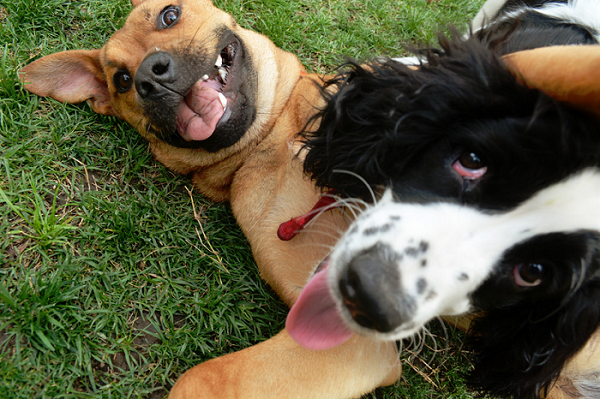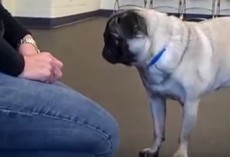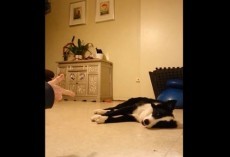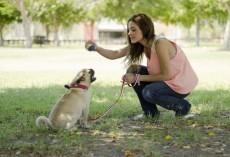Watch your dog and see what triggers his excited behavior. Is it the doorbell? Is it loud voices?
It’s been said that structure, consistency and supervision help promote good behavior. This is not only true for the family unit but for your pet as well.
1. First things first, use the best treats!
I don’t know how many times I’ve heard “But my dog just doesn’t care about treats!” Really? Is it because your treats are boring? Try using highly valued, smelly treats your dog can’t ignore. Hold them right up to your dog’s nose if you have to when re-gaining his attention.2. Provide lots of exercise.
The less pent-up energy your dog has, the easier it will be for her to remain calm. That doesn’t mean you take her for a two-hour hike on Saturday. It means two 45-minute walks every day or whatever it is she needs.3. Work on your dog’s general obedience training.
Start with the basics and keep working so your dog has some seriously solid obedience skills for things like sit, stay, come, heel, down, etc. It makes a big difference. Let me know if you need some suggestions.4. Decide what you want your dog to do, and practice.
Instead of “just be calm” what do you really want? Do you want your dog to lie down and stay on her bed? Do you want her to calmly walk to the door without barking?5. Determine what your dog needs to meet the above expectations.
Does she temporarily need to wear her leash in the house while you’re home, at least when you’re expecting visitors? Do you need better food rewards, like bits of hotdogs? Do you need to practice having people ring the doorbell a few times a day? Do your guests need to do better at ignoring your dog?6. Set up scenarios so you can practice.
You wouldn’t expect your dog to stay 30 feet away from you for 10 minutes on the day you taught her the stay command, right? She would need weeks of practice in very small steps to work up to that point.
When that inappropriate behavior commences – let’s say someone knocks or rings the doorbell – you are allowed to take a little time to address the dog. Do not rush to the door excitedly because your dog will take that as a cue. Simply, take a moment and correct its barking or whining. When the correction is understood then you can answer the door.
For more tips on correction during a visitor situation please go to That Mutt. This website will show you additional ways to train your dog back to the well behaved pooch you know and love. Good luck!










